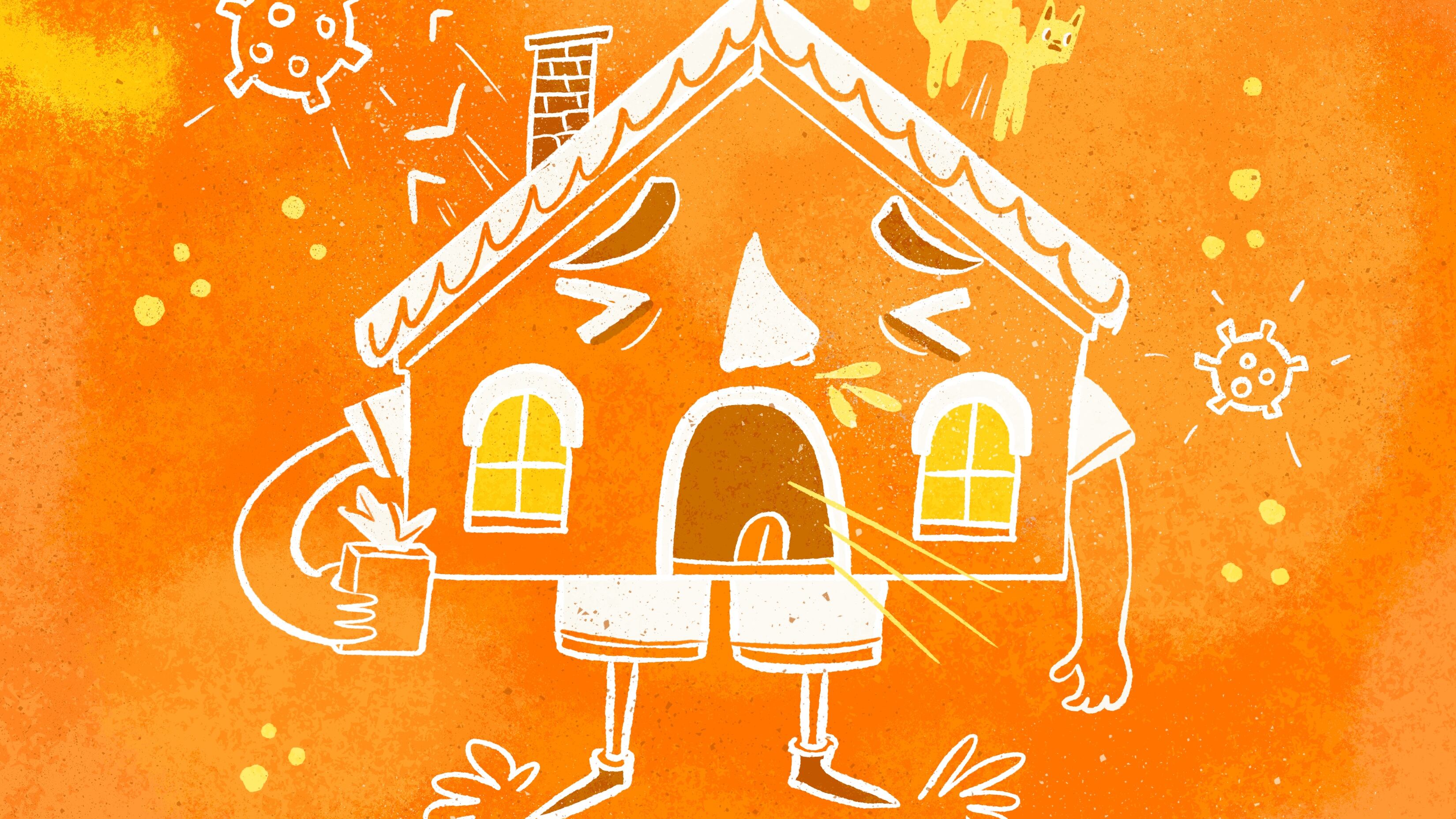There are those two pink lines again. This time around, they’re promising a little bundle of joy named…COVID-19.
Unfortunately, COVID infections are likely to be an unpleasant but common school nuisance this year, like the continuing bus driver shortage. Multnomah County health officials estimate about 150,000 of the county’s 800,000 residents have had the illness, which is likely an undercount with the ubiquity of in-home tests.
The ‘vid came for my family in early August (indoor family reunion of 17 people from four states, what could go wrong?) infecting me, my husband and one of our three children, all with mild symptoms.
Here’s how to get your family through it.
Get vaccinated and boosted.
You still have six days until a morning bell rings at Portland Public Schools, which is plenty of time to make sure you and your offspring are up to date on your shots. Everyone age 5 and older should have at least one booster by now, according to the Centers for Disease Control and Prevention.
For your teens, the White House is predicting that an updated COVID vaccine that targets omicron subvariants will be available by “early to mid-September” for everyone over the age of 12. As we have seen, though, vaccine rollouts can be unpredictable.
“The best vaccine is the vaccine that goes into somebody’s arm,” says Lorne Walker, a pediatric infectious disease specialist at Oregon Health & Science University. “It’s better than a theoretical vaccine in the future.”
Tell the school nurse your child is sick.
Do this as soon as possible, both so the school can get a heads-up about possible exposure and so the nurse can help you set your return-to-school date. Portland Public Schools is following state guidelines that students or staff who test positive must isolate at home for five days. They may return after symptoms are improving and they are fever-free. They should then mask at school for an additional five days.
Set up your positive and negative zones.
Protect everyone—and especially any elderly or immunocompromised relatives who live with you—by setting up your sick space. That’s the positive zone. Anybody who still has just one pink line on a test? They stay in the negative zone. That’s your best shot at preventing one case from spreading throughout the household.
At least, that’s the theory.
I convalesced in my bedroom with two fans, cracked windows and an air filter running 24-7. I wore an N95 mask whenever I left my zone and washed my hands whenever I had to prepare food, which was even on my sickest days because that’s motherhood. We split up and ate at positive and negative dinner tables. (Eating outside would have been even smarter.)
We all shared a bathroom, which was a no-no but unavoidable in our house. According to the CDC, we should have all been wearing masks and cleaning and airing out the bathroom between uses; we did none of that. I forgive myself because the CDC’s magical bathroom-cleaning fairy never arrived and I was too sick to do it.
Hoard tests.
Many of the iHealth Antigen Rapid Tests in the orange boxes that the government sent in the winter say they expire around now. However, the Food and Drug Administration has granted the iHealth tests a six-month shelf life extension so they’re good to go a while longer (you can check your new expiration dates at ihealthlabs.com/pages/news).
Still, our friends and family were feeling very generous giving us extra tests, which we appreciated because we were going through five a day at peak infection.
Get Paxlovid if you can.
There are a handful of treatments for COVID available, which are especially helpful for adults over 50, the unvaccinated or immunocompromised. I am none of those things, but I sweet-talked a doctor into a five-day course of Paxlovid and it stopped my infection in its tracks. It left my mouth tasting like metal with a hint of rotten grapefruit, but it allowed me to feel well enough to take care of my kids and I was extremely grateful.
Go wild with screen time.
There are two times I let my kids watch unlimited television and movies: airplanes and sick days. Release the guilt, forget every American Academy of Pediatrics recommendation you’ve been trying to follow, and hand over the remote. My trio took my phone and started their first YouTube channel. We did balance this out with gentle walks every day.
Ease back into sports if necessary.
About 20% to 25% of kids might have lingering symptoms after their acute COVID infections, according to Dr. Walker. He suggests if children are having difficulty breathing or are easily fatigued, they should slowly ramp activity back up.
“But if you’re at day six and you’re feeling great and ready to go back to volleyball practice, go for it,” he says. “We want kids to be active and engaged.”
Good luck, parents. You’ll probably get some March 2020 flashbacks when you bust out the jigsaw puzzles, queue up the Netflix and bake bread. But that’s also good news: We know how to do this.
